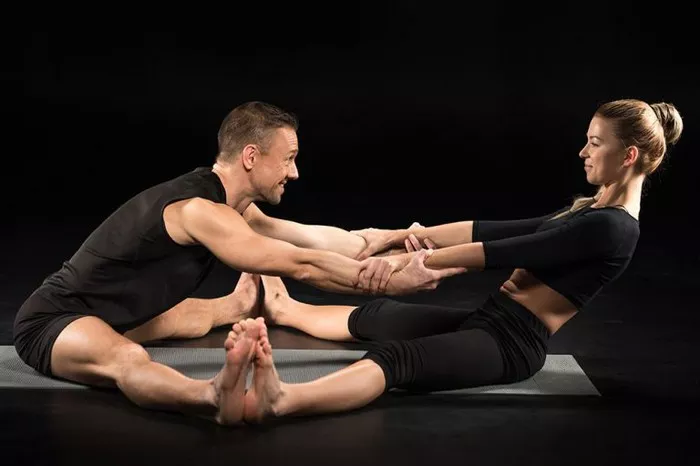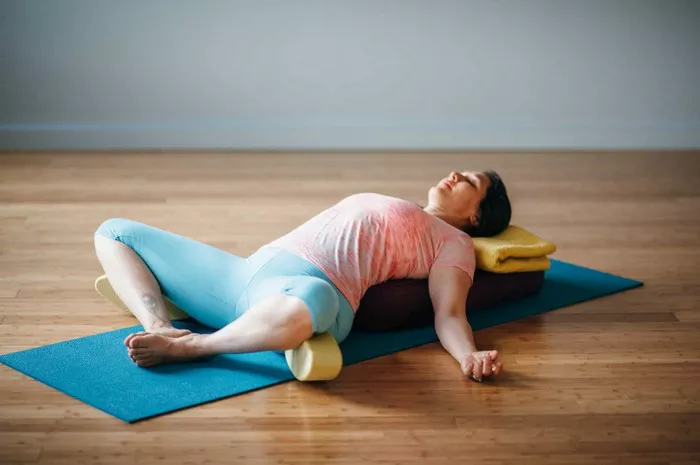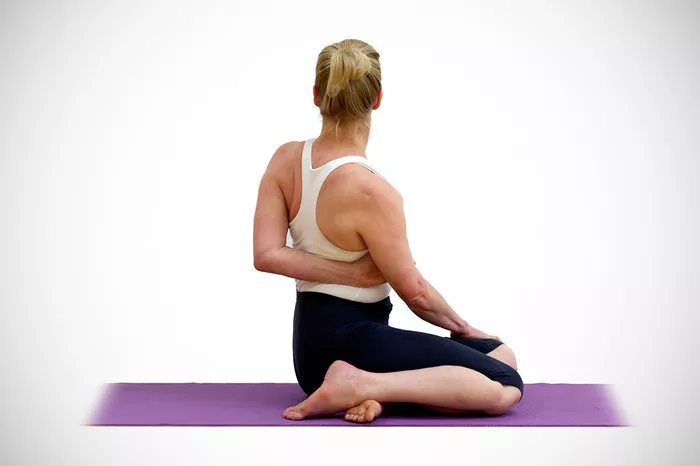Yoga has been practiced for thousands of years, with its origins deeply rooted in Indian philosophy and spiritual practices. Over time, various schools and styles of yoga have evolved to address different physical, mental, and spiritual needs. Among these, Zen yoga stands out as a unique blend of mindfulness, meditation, and physical movement. While traditional yoga focuses primarily on the connection between the body and breath, Zen yoga integrates principles from Zen Buddhism, emphasizing meditation, presence, and the cultivation of a calm, clear mind. In this article, we will explore Zen yoga techniques, their origins, and their benefits, and provide an overview of how they can be practiced effectively.
The Origins of Zen Yoga
To understand Zen yoga, it is important to first look at its origins. The term “Zen” refers to a school of Mahayana Buddhism that originated in China during the Tang Dynasty. Zen Buddhism places a strong emphasis on meditation (zazen), mindfulness, and direct experience rather than reliance on scriptures and rituals. This philosophy of experiential understanding and presence has influenced various practices worldwide, including yoga.
While traditional yoga comes from ancient Indian practices focused on achieving unity between mind, body, and spirit, Zen yoga blends the physical postures of yoga with the meditative focus of Zen. Zen yoga incorporates the core principles of mindfulness and meditation from Zen Buddhism, while also using asanas (yoga postures) to promote physical health and well-being. By combining these elements, Zen yoga offers a holistic approach to personal growth, mental clarity, and emotional balance.
Key Principles of Zen Yoga
Zen yoga draws on a few key principles that set it apart from other forms of yoga. These principles are fundamental to understanding the practice and its benefits.
1. Mindfulness (Sati)
Mindfulness is the act of being fully present in the moment, without judgment. In Zen yoga, mindfulness is cultivated not only through meditation but also during the physical postures. Practitioners focus on their breath, sensations in the body, and thoughts, which helps them develop a deep awareness of the present moment. This presence allows the practitioner to become more attuned to their body’s needs and experience a profound sense of peace.
2. Breath Awareness (Pranayama)
In Zen yoga, breath awareness is critical to maintaining a sense of calm and connection. The breath serves as a bridge between the mind and body. Breath control techniques, such as deep breathing, abdominal breathing, and alternate nostril breathing, are often incorporated into the practice. These techniques help to regulate the nervous system, reduce stress, and enhance concentration. Breath awareness also promotes the flow of prana (life force energy) throughout the body, improving energy levels and vitality.
3. Simplicity and Focus
Zen philosophy emphasizes simplicity and minimalism. This principle is reflected in Zen yoga’s approach to movement and postures. Unlike other forms of yoga that may have complex sequences, Zen yoga focuses on slow, deliberate movements. The goal is not to achieve complex poses or perfect physical form, but to move mindfully and with intention. The simplicity of the practice allows for a deeper connection to the body and breath.
4. Balance and Harmony
In Zen yoga, the balance between body, mind, and spirit is crucial. By cultivating balance through mindful movement and breathwork, practitioners can achieve a state of harmony. This balance extends beyond the mat, allowing practitioners to carry a sense of equilibrium into their everyday lives. The idea of balance in Zen yoga is not just about physical alignment but also about creating emotional and mental balance.
5. Meditation (Zazen)
At the heart of Zen yoga is meditation. Zazen, or seated meditation, is a core practice in Zen Buddhism, and it is often integrated into Zen yoga. The purpose of zazen is to cultivate a state of stillness and awareness. In Zen yoga, meditation can be practiced before, during, or after the physical postures. It may involve sitting in silence, focusing on the breath, or practicing guided meditation. The meditative aspect of Zen yoga helps to quiet the mind, reduce stress, and improve focus.
Zen Yoga Techniques
Zen yoga techniques combine various aspects of traditional yoga, mindfulness, and Zen meditation. The following are some of the key techniques used in Zen yoga practice:
1. Seated Meditation (Zazen)
The cornerstone of Zen yoga is meditation, particularly seated meditation (zazen). In this practice, the practitioner sits cross-legged, with their spine straight and their hands resting in a specific mudra (hand gesture). The focus is on the breath, with the practitioner simply observing the inhale and exhale without trying to control or alter it. If thoughts arise, they are acknowledged and then let go, returning attention to the breath. Zazen cultivates a deep sense of presence and clarity, helping to calm the mind and deepen awareness.
2. Mindful Movement
Unlike other forms of yoga that focus on achieving physical postures, Zen yoga emphasizes mindful movement. Each movement is done slowly and with full awareness of the body and breath. The practitioner moves with intention, paying close attention to the sensations in the body. Mindful movement may involve standing poses, seated stretches, or gentle flow sequences. These movements are designed to build strength, flexibility, and balance while simultaneously cultivating mindfulness and presence.
3. Pranayama (Breathing Techniques)
Breathing is an essential aspect of Zen yoga. Several pranayama techniques are used to enhance concentration, calm the nervous system, and increase energy. Some common pranayama techniques in Zen yoga include:
Abdominal Breathing (Diaphragmatic Breathing): This deep breathing technique involves inhaling deeply into the abdomen rather than the chest, allowing the diaphragm to expand fully. It promotes relaxation and reduces stress.
Alternate Nostril Breathing (Nadi Shodhana): This technique involves inhaling and exhaling through one nostril at a time while closing off the other nostril. It is thought to balance the left and right hemispheres of the brain, reduce anxiety, and improve focus.
Ujjayi Breath (Victorious Breath): This breathing technique involves constricting the throat slightly as you breathe in and out, producing a soft, ocean-like sound. It helps to regulate the breath and create a sense of calm and focus.
4. Gentle Yoga Poses (Asanas)
While Zen yoga incorporates physical postures, it does so with a focus on simplicity and relaxation. The emphasis is on cultivating a mindful awareness of the body rather than pushing for flexibility or strength. Common poses in Zen yoga may include:
Child’s Pose (Balasana): A restful pose that encourages relaxation and deep breathing.
Downward-Facing Dog (Adho Mukha Svanasana): A gentle inversion that stretches the entire body and helps to relieve tension.
Mountain Pose (Tadasana): A grounding standing pose that encourages good posture, balance, and alignment.
Cat-Cow Pose (Marjaryasana-Bitilasana): A gentle flow between two poses that improves spinal flexibility and promotes breath awareness.
These poses are often held for longer periods to allow the practitioner to fully connect with their breath and body sensations.
5. Walking Meditation
In Zen yoga, walking meditation (kinhin) is often practiced as a way to bring mindfulness into movement. This involves walking slowly and deliberately, paying full attention to each step. The practitioner focuses on the sensations in their feet as they make contact with the ground, and the rhythm of the breath as they walk. Walking meditation is a grounding practice that helps to bring clarity and presence into everyday life.
Benefits of Zen Yoga
Zen yoga offers a wide range of physical, mental, and emotional benefits. Some of the key benefits include:
1. Stress Reduction and Relaxation
The combination of mindfulness, meditation, and gentle movement in Zen yoga helps to activate the parasympathetic nervous system, which induces a relaxation response. Regular practice can significantly reduce stress, lower blood pressure, and promote overall feelings of calm and well-being.
2. Improved Focus and Mental Clarity
Zen yoga trains the mind to stay focused on the present moment. Through meditation and mindful movement, practitioners develop greater mental clarity, improved concentration, and the ability to handle distractions more effectively. This mental focus extends beyond the mat and can improve productivity and decision-making in daily life.
3. Enhanced Flexibility and Strength
Though Zen yoga emphasizes mindfulness over physicality, the gentle stretching and strengthening postures still provide benefits for the body. The slow, mindful movements promote flexibility, joint health, and improved posture. The focus on breath and body awareness can also help prevent injury.
4. Emotional Balance
By fostering a deep connection between body and mind, Zen yoga helps practitioners regulate their emotions. The meditative aspects of the practice promote emotional stability, reduce anxiety and depression, and encourage a sense of inner peace. Zen yoga also teaches practitioners to approach their emotions with non-judgmental awareness, which can lead to greater emotional resilience.
5. Spiritual Growth
For many practitioners, Zen yoga offers a path to spiritual growth and self-realization. The practice cultivates a sense of inner stillness, which allows for deeper self-reflection and awareness. It can help individuals connect with their true nature and develop a greater sense of purpose and meaning in life.
How to Practice Zen Yoga
If you’re new to Zen yoga, here are some tips to get started:
Start with Breath Awareness: Begin by practicing deep, mindful breathing. Focus on the inhale and exhale, allowing yourself to relax into the rhythm of the breath.
Incorporate Meditation: Set aside time each day to practice seated meditation. Start with just five minutes and gradually increase the time as you become more comfortable.
Move Slowly and Mindfully: When practicing yoga poses, move slowly and with full awareness. Pay attention to the sensations in your body and the rhythm of your breath.
Practice Consistently: Like any yoga practice, Zen yoga requires consistency. Set aside regular time for your practice, whether it’s in the morning, evening, or whenever works best for you.
Embrace Simplicity: Zen yoga is about simplicity, so avoid overcomplicating your practice. Focus on being present, rather than striving for perfect poses.
Conclusion
Zen yoga is a practice that integrates mindfulness, meditation, and gentle physical movement to promote overall well-being. By focusing on simplicity, presence, and balance, Zen yoga provides a holistic approach to mental, physical, and spiritual health. Whether you’re seeking stress relief, emotional balance, or spiritual growth, Zen yoga offers a profound path to inner peace and clarity. By incorporating mindfulness into each movement and breath, you can cultivate a deeper connection with yourself and the world around you, fostering a greater sense of calm, purpose, and fulfillment in your daily life.
Related Topics:





















